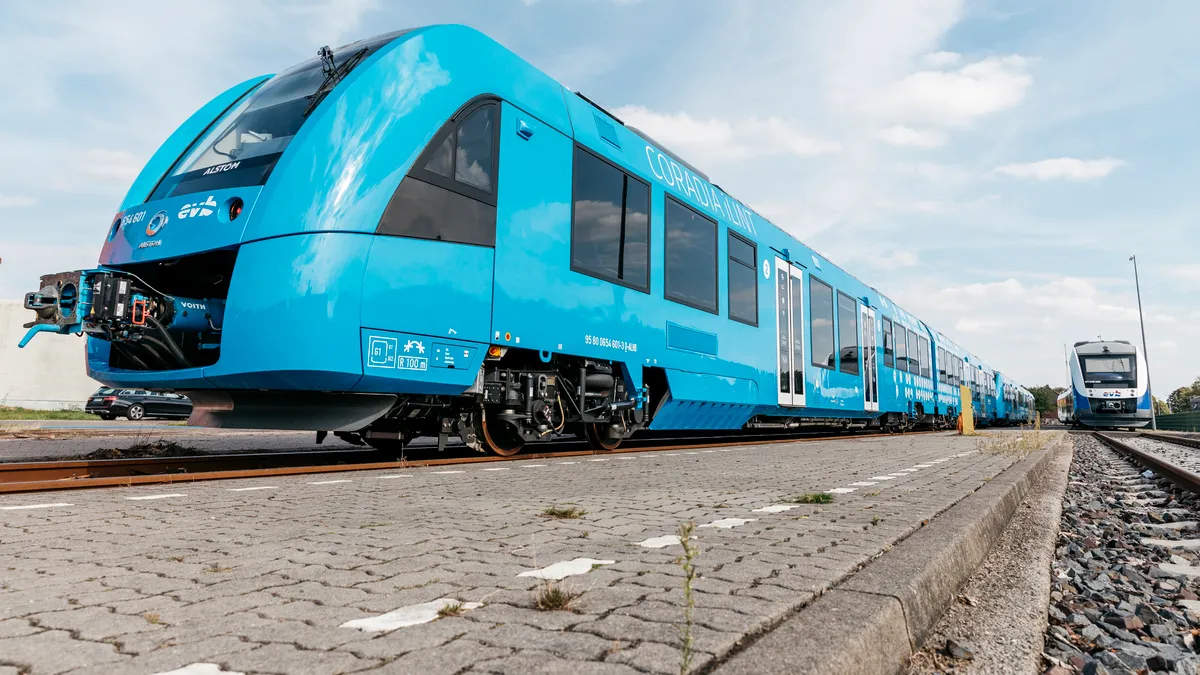Dive Brief:
- This week, French rail company Alstom began running what it calls "the world's first hydrogen fuel cell train" in Germany.
- The passenger train contains fuel cells that convert hydrogen and oxygen to electricity for fuel, thus eliminating carbon emissions. Alstom plans to deliver 14 more of the hydrogen-fueled trains by 2021.
- The two Coradia iLint trains travel at speeds up to 85 miles an hour on an approximately 60-mile line, and they emit less noise than traditional trains.
Dive Insight:
"This is a strong sign for the mobility of the future. Hydrogen is a real, low-emission and efficient alternative to diesel," Enak Ferlemann, Commissioner for Rail Transport and Parliamentary State Secretary of the Federal Ministry of Transport and Digital Infrastructure, said in a statement.
The process in which hydrogen and oxygen interact in the fuel cells to create electricity does produce an emission: water. That's far more environmentally friendly than the polluting carbon emissions from diesel trains. Any extra energy the hydrogen process creates is stored in a lithium ion battery on the train.
Alstom said the trains can run all day — for about 600 miles — on one tank of hydrogen. That's similar to the range of an average diesel train.
Hydrogen fuel cell technology isn't exactly new, but thus far it hasn't been widely adopted for transporting passengers because of safety concerns. Hydrogen's volatility has made transportation experts hesitant to use it, especially in high-speed vehicles such as trains, before the technology can be perfected to ensure safety.
The new hydrogen-fueled passenger trains have a higher initial cost to purchase than other trains, but they reportedly have lower ongoing operational costs, in addition to the environmental benefits.
Correction: A previous version of this story mischaracterized hydrogen's historical impact.












